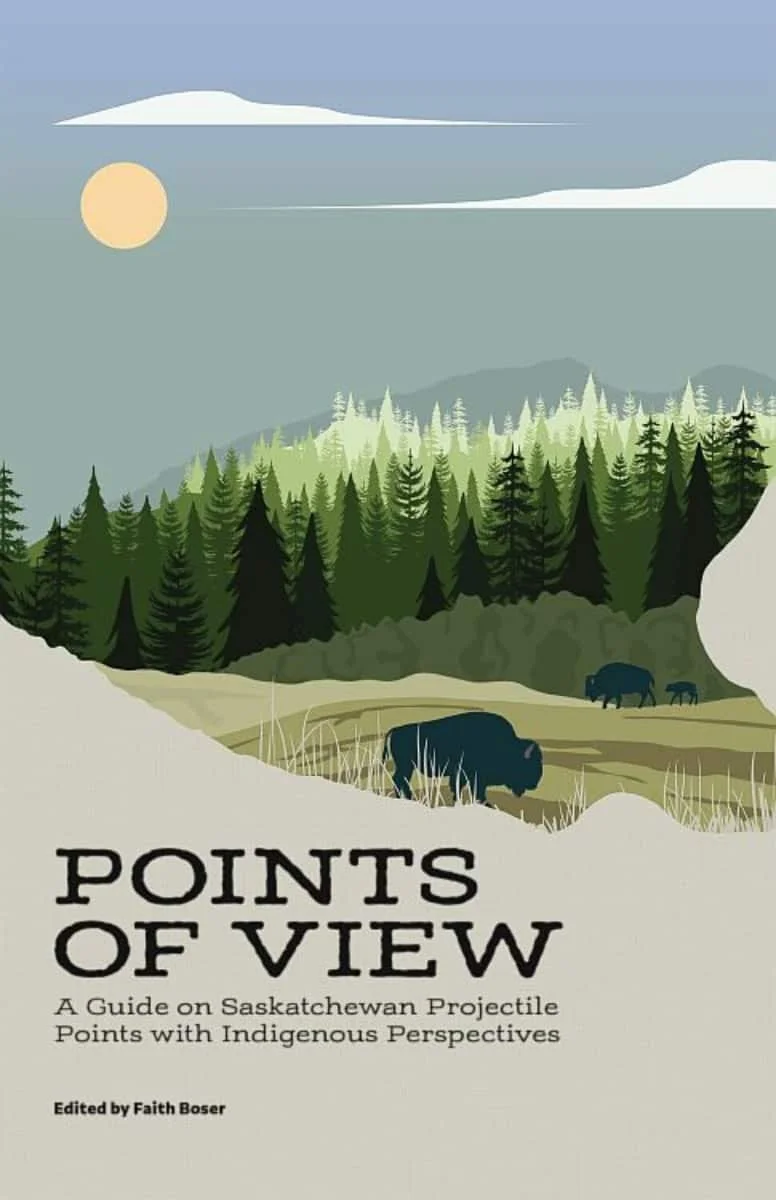Book: Points of View: A Guide on Saskatchewan Projectile Points with Indigenous Perspectives
Edited by: Faith Boser
Published by Saskatchewan Archaeological Society
Review by Toby A. Welch
Right off the hop, Points of View struck me as a visually stunning book. It is a pleasure to hold and read. The cover features a graphic image that includes buffalo, trees, mountainous hills, and a wispy sky with a full sun. It’s so striking that I would like to have that illustration blown up to a massive size to hang on my living room wall.
Once you flip open the cover, you encounter a coil binding that is a huge asset as you work your way through the pages. (It’s so great when a book lays flat without you having to hold it that way.) Once into the book, you get page after page of colourful diagrams, breathtaking pictures, and charts and graphs galore. The entire book, from one cover to the other, is a feast for your eyes.
The over 200 pages of Points of View are glossy sheets, something I am a huge fan of. I love feeling the slickness between my fingers as I turn the pages. The smoothness is oddly soothing. Recycled paper in books is a more popular choice due to the sustainability and environmental factors but I prefer glossy tenfold.
Once I got past the physical beauty of the book, the content sucked me in. Archaeology is a fascinating subject. The more I delve into it, the more I realize how little I know about the topic. The subject matter seems as vast as the history of humanity and it probably is. So what exactly does this book cover? Maria Mampe explains in the foreword: “This book is an identification guide, with colour photos, line drawings, and descriptions of Saskatchewan’s projectile point chronology, from both the Plains and the Boreal Forest.” Yet it is so much more than that.
Points of View has ten chapters and each chapter is written by a different author or authors. That keeps the writing fresh and captivating. Learning about the projectile points and their literal history is fascinating. Near the end of the book you’ll find a five page glossary, which is a huge help as you go through the chapters. Not sure what glacial kettles, pressure flaking, and bowyery are? You just have to flip to the back. There is also a “Postscript on Language Usage” section that suggests the preferred current usage of words such as Tomahawk, Inuit, Native, Savage, Indian, and many more.
I learned a lot from this book, always a bonus as far as I’m concerned. Whether you have a passing interest in archaeology, are a professional in the field, or work in a museum, Points of View deserves a spot on your bookshelf.
THIS BOOK IS AVAILABLE AT YOUR LOCAL BOOKSTORE OR FROM WWW.SKBOOKS.COM.

